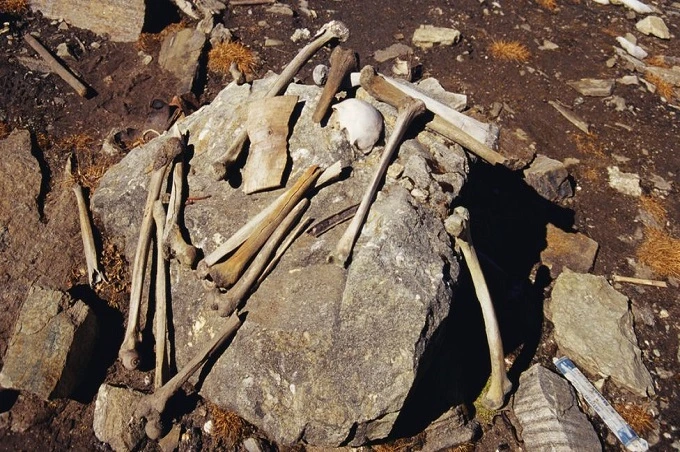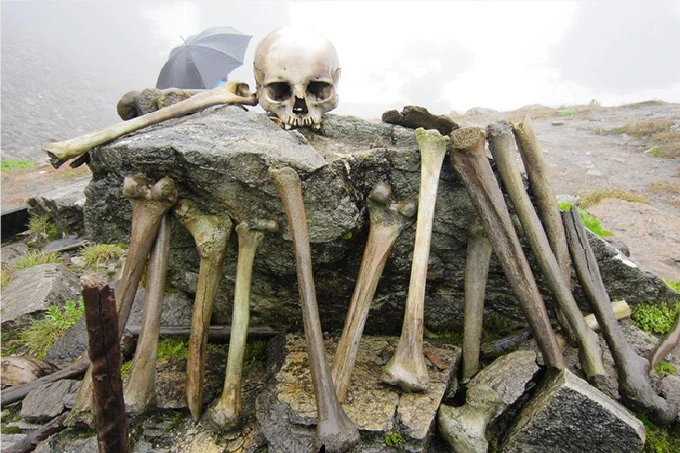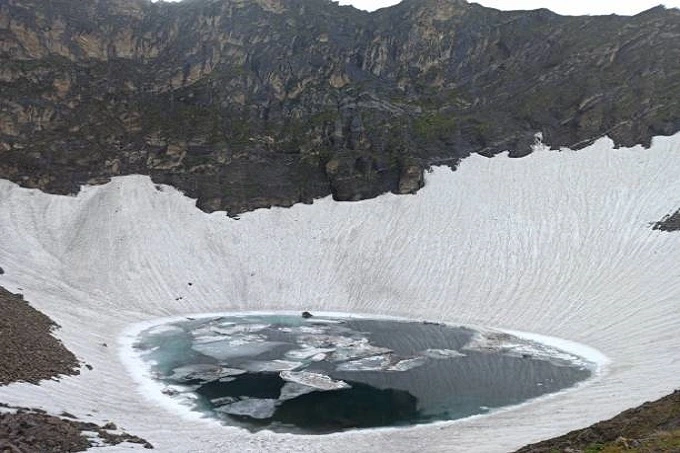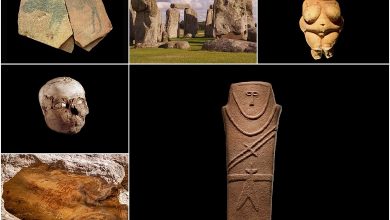Lake of skeletons: Scientists have unraveled the mystery of the Roopkund lake, over which they fought for many years

In the depths of India’s sacred Himalayan mountains, something once unexplainable has occurred at breathtaking heights. Most of the year, the waters here stay frozen to the lowest depths, but in summer, the dangerous torrents are freed from their ice shackles, exposing a riverbed filled with human bodies. This is Roopkund or Skeleton Lake in Uttarakhand. It appears like a figment of the wildest imagination, but it is a fact. For eight decades, scientists have been unable to get to the bottom of what has occurred here. Finally, the light of truth appears to be shining.
Forest ranger’s shocking discovery

In the early 1940s, a local forester called Madhwal came across something weird and terrifying in India. Near a lake in the Himalayas lie hundreds of human bones. The forest ranger was shocked by his discoveries. First, the corpses seemed unaffected by decomposition. Secondly, as far as he knew, many such people had not disappeared all at once. Thirdly, how had they all come here when the next village was five days away over extremely difficult terrain?
When scientists reached here, they counted six to eight hundred dead. Despite all the wonderful stories and traditions surrounding the origin of the lakes, they have now acquired dark connections with death. The widest range of explanations for the disaster that had occurred up in the mountains was put forth to explain what had happened. It wasn’t long before crowds of brave visitors started to climb their way up the mountain peaks in search of the mysteries of Skeleton Lake.
The ghostly memories of the dead

According to historians, the bodies were first thought to be the remains of Japanese soldiers who had attempted to enter Indian territory. In another scenario, the dead might have been Tibetan merchants on the Silk Road who died due to an epidemic. According to others, the location served as a cemetery for people who perished in a violent hailstorm delivered by the goddess Nanda Devi when she became angry. Some theories claim that all of the remains found in this area belonged to King Jasidhwal of Kannauj and his consort and their large entourage. They were on their way to the royal palace to celebrate the birth of the royal heir. Jasidhwal violated the rules of the trip, angering Goddess Nanda Devi, who retaliated against him. Because of this, she unleashed a storm on the people. Interestingly, this explanation is compatible with historical descriptions of Lake Superior’s origin.
According to stories, god Shiva and goddess Parvati were on their journey to Mount Kailash when the incident occurred. The goddess expressed a wish to take a bath while on her journey. However, she was disappointed to see that there was no water body or supply of water nearby. Shiva then plunged his trident into the earth, causing a lake to form in its place. The water in it was clear, allowing the gorgeous face of Goddess Parvati to be seen in full reflection. Roopkund was the name of the lake. All of these magical features and the stories of the gods are unique to India. They have been woven into the fabric of local mythology for hundreds of years.
A more practical approach to the problem

There’s another way of looking at it. This is a much more simple example. It implies that they were certainly pilgrims but not of royal descent. They were regular Indians who embarked on the Nanda Devi Raj Jat Yatra pilgrimage in the 9th century, and their journey was documented. Archaeologists have found no evidence to support the mythical stories about the lake’s heavenly origins or the presence of skeletons on its shores, which have been told for centuries. Having spent five years meticulously examining the bones, they have concluded that they are all unique. Some of them are more than a thousand years old, while others are more recently made. They’re also all very distinct from one another in terms of genetics. Some had traveled from South Asia, while others had traveled from Europe. Asians died during the 7th and 9th centuries, whereas Europeans died largely between the 19th and 20th centuries.
All of the men and women were adults and in good health. They did not die as a consequence of a medical condition. Unfortunately, no tools or clothes have remained that may be able to assist in completely unraveling this mystery. These qualities have caught the interest of the world’s most brilliant scientific minds for many years. According to archaeologists, cracks have been discovered in several of the well-preserved skulls. As a result, the hailstone idea is a very probable possibility. The location is also on the pilgrims’ route, which is an added bonus.

Experts have not validated reports of a large number of deaths. Despite this, the lake draws an increasing number of interested tourists year after year. They are anxious to unravel the riddle of an unknown ancient history that the snow-capped hills of the Himalayas have hidden for thousands of years.




